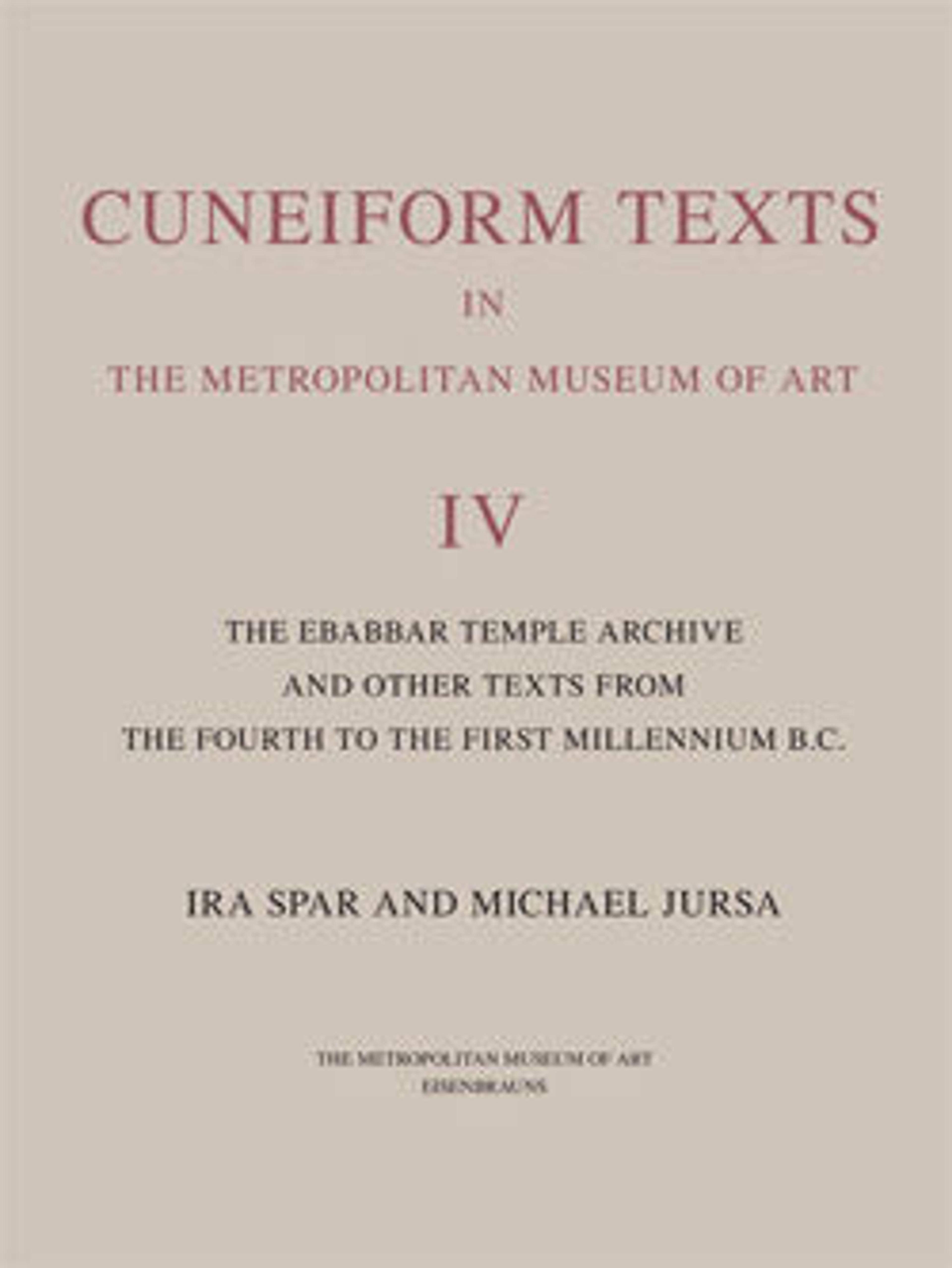Corner fragment of inscribed prism (kudurru)
The invention of writing in approximately 3300 B.C. was one of many developments in administrative technology--including the use of geometric tokens for counting and cylinder seals to guarantee transactions--that accompanied the growth of the first cities and states in southern Mesopotamia. Proto-cuneiform is the name given to the earliest form of writing--pictograms that were drawn on clay tablets. Gradually, the pictograms became abstracted into cuneiform (Latin, "wedge-shaped") signs that were impressed rather than drawn. At its greatest extent, cuneiform writing was used from the Mediterranean coast of Syria to western Iran and from Hittite Anatolia to southern Mesopotamia. It was adapted to write at least fifteen different languages. The last dated cuneiform text has a date corresponding to A.D. 75, although the script probably continued in use over the next two centuries.
This object is a fragment of an unusual clay prism and bears both a cuneiform text and images. It was originally twelve-sided and, in fact, three other fragments are known (one in the Metropolitan. 86.11.309 and two in the Harvard Semitic Museum). Above the cuneiform inscription which reads from left to right are parts of three images of divine symbols: an altar with a stylus on top, representing the god Nabu, the god of writing; an altar that appears originally to have had the image of a dog on top of it, standing for Gula, the goddess of healing; and traces of the left side of an altar. The presence of the symbols on the domed top of the object suggest that it may have be a kudurru-like text. Kudurrus are a distinctive group of Babylonian monuments (narus) once thought to be boundary markers placed in fields. In fact they are more likely to have been placed in temples, where their contents were preserved and sanctified. The monuments, usually made in stone, carry inscriptions describing grants of land, often from the king to a high official. Around the text are placed divine symbols, which act to protect and guarantee the gift. The text on this prism records a set of royal land grants made to members of prominent Babylonian families.
This object is a fragment of an unusual clay prism and bears both a cuneiform text and images. It was originally twelve-sided and, in fact, three other fragments are known (one in the Metropolitan. 86.11.309 and two in the Harvard Semitic Museum). Above the cuneiform inscription which reads from left to right are parts of three images of divine symbols: an altar with a stylus on top, representing the god Nabu, the god of writing; an altar that appears originally to have had the image of a dog on top of it, standing for Gula, the goddess of healing; and traces of the left side of an altar. The presence of the symbols on the domed top of the object suggest that it may have be a kudurru-like text. Kudurrus are a distinctive group of Babylonian monuments (narus) once thought to be boundary markers placed in fields. In fact they are more likely to have been placed in temples, where their contents were preserved and sanctified. The monuments, usually made in stone, carry inscriptions describing grants of land, often from the king to a high official. Around the text are placed divine symbols, which act to protect and guarantee the gift. The text on this prism records a set of royal land grants made to members of prominent Babylonian families.
Artwork Details
- Title:Corner fragment of inscribed prism (kudurru)
- Period:Neo-Babylonian
- Date:ca. 7th–6th century BCE
- Geography:Mesopotamia, Babylon (?)
- Culture:Babylonian
- Medium:Clay
- Dimensions:4 in. × 3 1/2 in. × 9/16 in. (10.2 × 8.9 × 1.4 cm)
- Credit Line:Purchase, 1886
- Object Number:86.11.280
- Curatorial Department: Ancient West Asian Art
More Artwork
Research Resources
The Met provides unparalleled resources for research and welcomes an international community of students and scholars. The Met's Open Access API is where creators and researchers can connect to the The Met collection. Open Access data and public domain images are available for unrestricted commercial and noncommercial use without permission or fee.
To request images under copyright and other restrictions, please use this Image Request form.
Feedback
We continue to research and examine historical and cultural context for objects in The Met collection. If you have comments or questions about this object record, please contact us using the form below. The Museum looks forward to receiving your comments.
